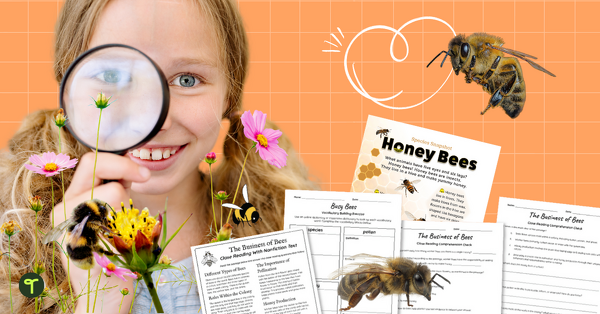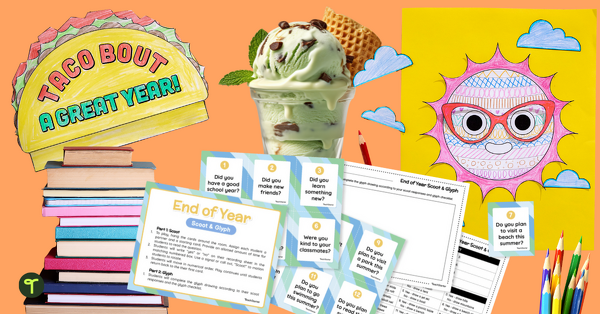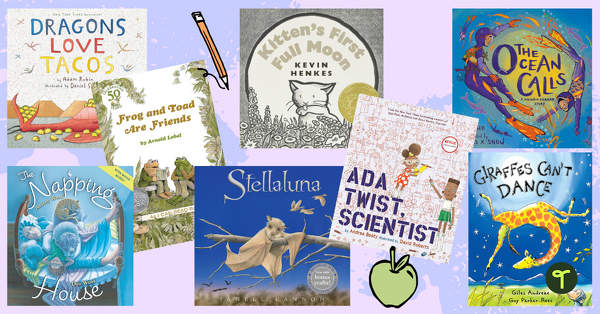Threats against schools across the country have teachers, parents, and entire communities on edge — and TikTok is right at the center of it. An increasing number of challenges from the video-sharing social platform have cropped up this school year, designed to be done on school property, sometimes with dangerous consequences.
From Devious Licks – a challenge in which kids steal something from school to show off in a TikTok video — to school shooting threats, TikTok challenges have completely invaded schools, and that includes elementary and middle campuses too. Not every challenge is as dire — or dangerous — as threats to enact mass violence on a school campus. Still, there’s no question TikTok is something teachers can’t ignore.
How’s it happening, and what can teachers do about it? We talked to some experts about the TikTok challenges every teacher should know about and how to stay on your toes.
What Do Teachers of Young Kids Need to Know About TikTok?
When you’re teaching at an elementary or middle school, TikTok may not be at the top of your mind. After all, the social media platform is supposed to be for teenagers … right? Technically TikTok limits sign-ups to kids 13 and up to meet the Children’s Online Privacy Protection Rule (COPPA), a federal regulation that’s designed to protect kids online. Platforms like Instagram, Facebook, and Snapchat have similar age limitations.
But Teodora Pavkovic, digital wellness expert and psychologist at cyber content-filtering company Linewize, warns that younger kids are hearing about the platform everywhere they turn, be it from older siblings, kids on the school bus, or on TV.
“Tik Tok has quickly climbed the social media popularity ladder and is now quickly catching up with YouTube in terms of both the number of its younger users and, more importantly, the time they spend on the platform,” Pavkovic says.
Some are just viewing the videos without an account — you don’t need to create one to view content on TikTok. Others have accounts — and they’re posting a lot.
“Most of all my students are on social media, especially Tik Tok,” says Tiffaney Whyte, a fifth-grade special education teacher in Georgia. “The students that are creating Tik Tok [do it] any time they get a chance. Sometimes, they will sneak their phones in the bathroom and create Tik Tok with their friends!”
Not on TikTok yourself? The good news: Watching TikTok (or even creating videos) isn’t inherently bad. “What you primarily see on Tik Tok are humorous videos that involve things like singing, dancing, baking, playing with pets, raccoons eating Cheetos and the like,” Pavkovic says. In other words, there’s a lot for kids to love.
TikTok Challenges & Schools
But then there are the challenges being issued, which lead kids down inappropriate paths at school. The goal? To take part in the challenge by posting a video of yourself doing the task at hand, be it vandalizing school property or hurting a teacher. Kids create the videos in hopes of growing their followings and landing on the coveted TikTok For You Page, where they’re seen by millions of other TikTokers.
How serious are these TikTok challenges? Take it from the schools from Michigan to Washington that have closed for days due to shooting threats on TikTok. The video platform took to Twitter in response, noting its working with law enforcement to “look into warnings about potential violence at schools even though we have not found evidence of such threats originating or spreading via TikTok.”
Earlier this year, schools across the country were subject to vandals ripping soap dispensers off walls and walking off with paper towel dispensers in the name of the Devious Licks challenge. Middle schoolers have landed in hot water for vandalizing in the name of Devious Licks, and the”slap a teacher” challenge has already seen elementary schoolers disciplined for taking part.
The pull to take part for young kids isn’t much different from the incentives for their older peers, Pavkovic says. They just want to be part of something!
“The definitive feature of Tik Tok is its global trends, which explains why the isolation (and loneliness) that the Covid-19 pandemic brought us helped the platform become so incredibly popular,” she explains. “Taking part in these trends and challenges enables people to band together and feel a sense of unity and connectedness, the kind we haven’t felt ‘in real life’ for many, many months.”
The desire to connect is why today, “Gen Z-ers are the most vocal generation when it comes to environmental preservation and protection,” Pavkovic says.
On the other hand, it has its drawbacks too.
“This desire to belong, paired with another key feature of adolescent brain development — risk-taking — is what leads to challenges such as #DeviousLicks becoming such big trends,” Pavkovic explains. “Young people find a lot of meaning in getting involved in these trends and taking part in them gives them an exciting avenue to explore what they love doing best: bending (and breaking) the limits of what adults expect from them.”
Debates rage on about what is next and what is just a rumor. These are some of the school-related TikTok challenges said to be on the horizon — although there’s indication that these may also be entirely made up by trolls:
- January: Jab a breast
- February: Mess up school signs
- March: Make a mess in the courtyard or cafeteria
- April: “Grab some eggz” (another stealing challenge akin to Devious Licks)
- May: Ditch day
- June: Flip off in the front office
Whether these will happen or not is unclear. TikTok challenges tend to be more organic, with virality as impossible to predict as it has been on any other social platform.
For example, many kids are using mask strings to try to cut plastic in schools — because of a TikTok trend. That’s certainly not on the list.
What Can Teachers Do About TikTok Challenges?
Get Familiar With TikTok
You don’t have to create an account yourself, but Pavkovic suggest simply understanding how the platform works and how kids access it.
For example, you can get on TikTok by downloading the app from the App Store or Google Play, or by entering tiktok.com in a browser. It’s worth pulling up the browser and taking a look, so you at least know the lingo and understand how it is your students are learning about “no bones day” (don’t worry; it’s harmless and even kind of cute) or Olivia Rodrigo’s doppelganger.
“Take the time to educate oneself around how the platform’s algorithm works, what the risks are and how to address them, and what steps can be taken to make the platform as safe as possible for young people (by exploring its privacy settings and parental control options),” Pavkovic advises.
When in doubt? Ask the students, says Alex J. Packer, an educator, psychologist, and author of Slaying Digital Dragons: Tips and tools for protecting your body, brain, psyche, and thumbs from the digital dark side.
“Since many kids know far more than adults about how these sites work and their many layers and features, I believe that asking nonjudgmental questions is a great way to introduce topics and get the discussion going,” Packer advises. “Create a climate where students will feel free to open up. If some kids seem reticent, ask questions in terms of ‘older kids they know.’ Let your students teach you!”
This Common Sense Media guide to TikTok was written for parents, but it has plenty of information that works for teachers too!
Talk About Values
“These kinds of social media challenges provide a great opportunity for teachers (and parents at home) to reconnect their classrooms with their school values, and to remind their student body of the kinds of interpersonal qualities — such as kindness and compassion, for example — that they have all committed to embodying,” Pavkovic says.
Talking about TikTok challenges during social-emotional learning modules can be a perfect way to weave real-life into your teaching, framing a TikTok challenge as one that either aligns or doesn’t with the values you’re discussing. Kids can be taught that they have the power to choose what values they want to pursue.
“As long as you keep the language age-appropriate, this can be taught even to the youngest elementary school children,” Pavkovic says.
And while you’re at it, keep your conversations neutral.
“The best way to walk that line is to present a balanced view, one that combines the negatives and positives, the risks and the benefits, and one that lets kids know that we completely understand why they are drawn to these kinds of virtual spaces in the first place,” Pavkovic advises.
Questions Packer says you might ask include:
- Do you use social media? Do you know older people who use social media?
- What’s the best thing about social media? What’s the worst thing?
- Do you think social media makes people fake?
- Have you ever heard of bad things happening from being on ___________ [fill in the blank with a platform]?
- Have you ever done a challenge you learned about on TikTok? What happened?
- Do you know anyone who’s done a dangerous challenge? Why do you think kids do things they know could hurt them or others?
Finally, Packer advises brainstorming language children can use to push back against pressure to engage in risky activities.
“Suggestions can be offered and solicited in class,” he says. “Humor is often a good way for kids to draw a line and bow out without coming across as holier than thou to their classmates.”
Incorporate the Challenges Into Your Writing Assignments
Social and emotional lessons aren’t the only part of the school day where you can bring in TikTok challenges. Whyte saw students taking part in Devious Licks and decided to face the potential for her students to try the slap a teacher challenge head-on — with a writing assignment.
“Once I heard about the October challenge, I decided that before it happens I will let the fifth graders know about the consequences,” she says. “The students were asked to complete an informational piece about the current TikTok trend ‘slapping a teacher.’ The assignment was completely aligned with the current standards and allowed the students to research the cons of doing everything you see on social media.”
(You can learn a little more about Whyte’s TikTok writing lesson on her Instagram)
Be Mindful of Emotional Disturbances
TikTok is chock full of funny and charming videos that your students may love, but Pavkovic advises teachers just keep an eye out overall for potential emotional disturbances that could be tied to the platform.
“For teachers working with very young children, it’s also important to keep in mind that outside of seriously inappropriate videos, even fun and lighthearted videos like Halloween-themed spoofs may be distressing to very young kindergarten- or elementary school-aged children,” she notes.
Include Parents in Your Conversations
If you feel like it’s necessary to have a talk about TikTok challenges in the classroom, it’s probably good to send a note home to parents to let them know what you’ve talked about. That way everyone is on the same page.
Looking for teaching resources to help you talk about tough stuff with students? Try these free resources for social-emotional learning:
[resource:4387270][resource:4454849][resource:4406290][resource:2336806]
Or check out our entire array of social-emotional learning resources for teachers.
Update April 2022: Evidence has come to light that some news reports about TikTok challenges perpetrated in American schools were planted by Meta to hurt its competitor, TikTok.







Comments